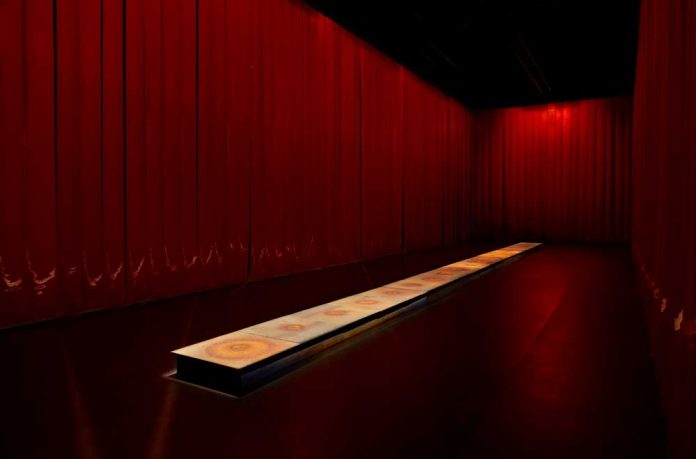Carriageworks was placed into voluntary administration on May 4. Two weeks later help came from philanthropists and the venue rose from the dead. The venue reopened to the public on August 7. Since that time, free access to a range of visual art, including eight new installations commissioned for the 22nd Sydney Biennale, have been on display.
Aproximación al lugar de los hechos (Approach to the scene), created by Teresa Margolles, is a work I was immediately drawn to for its beauty, compassion, and its fierce message.
Margolles was born in Culiacán, Mexico, in 1963. She originally trained as a forensic pathologist, and holds diplomas in science of communication and forensic medicine. She has been creating sculptural installations, photographs, films and performances about trauma and loss for over 25 years, and works closely with communities that have no access to systems of social care.
Her work as a forensic scientist informs and inspires her art, and her art explores and lays bare the relationship between poverty, violence, marginalisation, gender and the anonymous victims of violence who can’t be identified but deserve to be mourned.
Margolles worked with a group of students from the National Art School in Sydney to create this installation. They sought out and visited 20 sites where violent acts, homicides and disappearances of women have taken place in Sydney and surrounding suburbs. They poured water onto the ground where the homicides and the disappearances of women took place, then absorbed small pieces of material left by each violent act.
The finished artwork, surrounded by red industrial plastic, shows 20 steaming iron plates onto which the drops of water, laced with the residue of violence, fall from above.
The effect is both churchlike and hellish. The silence accentuates the hiss of falling water, and the faint smell and proximity to a scalding hot iron combine to create an air of sinister yet sacred ceremony. See it if you dare …
Welcome back Carriageworks!





